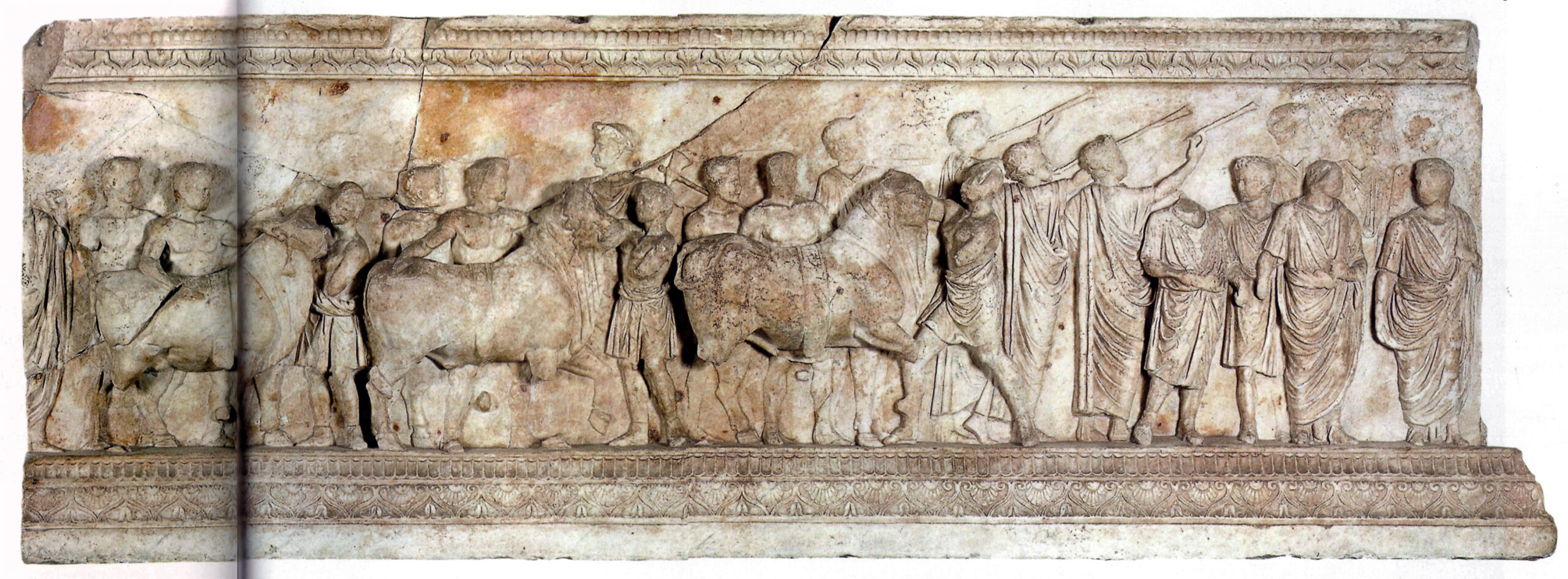Lysimachus’ pompe in Priene
| TITLE: |
| Lysimachus’ pompe in Priene |
| DATE: |
| c. 285 BC |
| TEXT: |
| OGIS 11 = I.Priene 14 |
| EDITIONS/TRANSLATIONS: |
| OGIS 11 = I.Priene 14 |
| KEYWORDS: |
| Word used to mean procession: |
| πομπή (l. 21, καὶ πομπ̣ὴ[ν π]έμπε[ιν) |
| Word used to mean the cult images: |
| ἄγαλμα (l. 15, καὶ] ἄγαλμα χαλκοῦν) βωμὸν (l. 17) |
| Gods or other entities named: |
| Description of the cult images: |
| A bronze statue of him (l. 15, ἄγαλμα χαλκοῦν) An altar both erected in the agora (l. 17, καὶ βωμὸν αὐ[τοῦ ἐν τῆι ἀγορᾶι) A [gold] crown of 1000 staters (l. 14-15, στεφά[ν]ωι [χρυσῶι] ἀπὸ χρυσῶν χιλίων) |
| Procession’s route: |
| Frequency with which the procession takes place: |
| Every year sacrifices on the king’s altar (l. 19, καθ’ ἕκασ]τον ἐνιαυτὸν) as well as every year took place the procession on the day of the king’s birthday (l. 22-23, τοῖς γενεθλίοις βασιλέως Λυσιμάχου) |
| Performers: |
| The priests and the colleges of magistrates and all the citizens (l. 21-22, πομπ̣ὴ[ν π]έμπε[ιν το]ύς τε ἱερεῖς καὶ τὰς συναρχ[ίας] καὶ τοὺς πολίτας πά̣[ντας) |
| References to the public attending the procession: |
| All the citizens wearing garlands (l. 20, στεφαν̣ηφορεῖν [τ]ο̣[ὺ]ς̣ πολ̣ί[τ]α̣ς ἅπαν[τας]) |
| Rites related to the procession: |
| The priests and the priestesses of the city shall sacrifice on the altar every year (l. 18-20, καὶ θύειν καθ’ ἕκασ]τον ἐνιαυτὸν [τούς τε ἱερεῖς καὶ τὰς ἱερείας τὰς κατὰ] τὴμ πόλιν); sacrifices on the day of the procession (l. 24, θύματα) |
| Allusions to conduct or forms of reverence: |
| Other remarkable elements: |
Lysimachos (l. 1, Βασιλεῖ [Λυσιμάχωι.], c. 360 BC – 281 BC), king of Thrace, Asia Minor and Macedon since 306 BC, had intervened to protect the city of Priene from an attack by the city of Magnesia supported by the local population; in return, Priene then established a cult of Lysimachos |
| BIBLIOGRAPHY: |
| BÖMMER (1952), RE: s.v. Pompa. Herrscher, Vol. XXI.2, p. 1968, n.297 Helen, S. L. (2002): Lysimachus: a study in early Hellenistic kingship, Routledge, London Seres, D. (2017): “Dynamics of public memory in Hellenistic Priene: a case study”. In: Bajnok, Dániel (ed.), ALIA MISCELLANEA ANTIQUITATUM. Proceedings of the Second Croatian–Hungarian PhD Conference on Ancient History and Archaeology. Budapest-Debrecen, pp. 189–200 |
